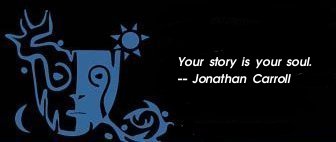
Jonathan Shay. Odysseus in America: Combat Trauma and the Trials of Homecoming.
Foreword by Senators John McCain and Max Cleland. New York: Scribner, 2002.
329pp. $25.00 cloth. Reviewed by Dennis Patrick Slattery
I am always a little skittish about a book that promises to use literature to
shed light on "real life" situations in a methodology that often goes no deeper
than a matching this with that. Jonathan Shay's book, following 8 years after
the publication of his Achilles in Vietnam: Combat Trauma and the Undoing of
Character (1994), does a fair bit of the latter; but it redeems itself with his
knowledge of the psychology of Post Traumatic Stress Disorder (PTSD) among
Vietnam veterans and his "unashamed moralist" stance towards the ethical use of
power. He makes no bones about what he believes is done badly by the military
establishment in producing men and women who do not know how to readjust to
civilian life.
Having said the above, I am pleased with any new work that retrieves the wisdom
of classical epics, or ancient literature in any form, in order to reveal the
sustaining power and vision of the original poet's understanding of the human
soul. This is Shay's second, and I believe, successful attempt to bridge what
is often perceived to be a wide chasm between drama and trauma.
He divides his study into three parts: 1. "Unhealed Wounds," which takes us
through the litany of episodes Odysseus and his crew experience as they attempt
to reach home after ten years of combat at Troy;
2. "Restoration" combines Homer and the works of Aristotle with personal
stories of vets, damaged, isolated and misunderstood, returning home to a
hostile temper. This section contains the most poignant part of the study, from
my perspective: a description of visits to the Vietnam Wall in D.C.;
3. "Prevention" launches into how the deep and lasting psychological and moral
injury to service men and women could be lessened if the metaphor that shapes
military doctrine and the treatment of those in the services would change from
one of a mechanism with interchangeable parts, to one more organic and
holistic. Shay points out repeatedly that more money is not the issue; rather,
it is the shallow understanding of what trauma is and does to people who serve
in times of conflict; these same people often remain conflicted on many levels.
Finally, the study contains three important Appendices: 1. a summary of the 24
books of Homer's Odyssey for those not familiar with the story; 2. Information
Resources for Vets and Their Families; 3. Some Proposals. Study these last
closely. They gather up, in a couple of pages, where Shay's entire study has
been headed. Lastly, his bibliography is superb, combining readings in
psychology, ancient philosophy, literary criticism on the classics, and
personal diaries and accounts by patients he has worked with.
As I suggested above, the weakest part of the book is the matching of incidents
in the epic with actual incidents, situations and descriptions of vets in
Vietnam and then after they return. At the same time, Shay's own observation
should be noted when he responds to those who may accuse him of portraying a
stereotype of the crazed Vietnam vet coming home ready to continue in war mode:
"Absolutely nothing I have to say here is distinctive to the Vietnam War. War
itself does this. War itself creates situations that can wreck the mind" (31).
His thesis is then two-pronged: to improve the conditions for service personnel
in any war, and to improve them psychologically and emotionally when they
return home so they do not do irreparable harm to themselves and others. What
saves this section for me is that the Homeric descriptions evoke in Shay a
series of analogies, of likenesses and correspondences he witnesses daily in
the Veterans Improvement Program (VIP) he manages.
Shay's strength rests in his ability to allow the traumatic situations of
Odysseus and his men to resonate across millennia. It is in the resonance, not
the matching, that this section sheds light on the conditions of trauma that do
not age. The weakness can also multiply by taking incidents out of their
organic context.
Asking if Odysseus may have had PTSD as defined by the APA or DSM IV pulls Shay
and us off track, as Odysseus and his men were. But revealing that the Greek
word for Ulysses-"Oulixes"-is etymologically connected to the word for
scar-"oule"-lets us see into Odysseus' anger, wounding and behavior at Troy and
after.
Parts 2 and 3, "Restoration" and "Prevention," are strongest in that they allow
the author to expose the flaws he sees endemic to current military methodology.
From exploring Homer's epic, Shay suggests that what is missing in today's
paradigm of combat is the build up of TRUST, which can be improved by changing
the metaphor that the military uses in keeping troops in check. Social
cohesion, keeping units together instead of rotating out single members that
often breaks down cohesion and trust, insisting on "competence as an ethical
imperative" (223), and demanding a high and sustained ethic in the military
leadership will reduce the trauma in combat and the terrors of returning home.
He ends his study by poignantly calling for a national ritual of purification
for all those who fought; this ritual should originate and be carried out not
by the government but by churches, community leaders, so that a national
cleansing is overt, conscious and communally shared.
Of course, his last observation is one with which many could agree, namely:
"ending the social practice of war is the struggle of this century"(251). When
I teach Homer's Odyssey to my graduate students this year, Shay's book will
appear prominently on the reading list.
Return to Passages Menu
|
